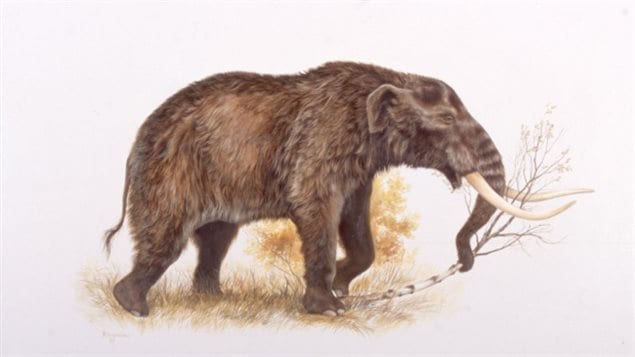Humans wiped out the dodo, and surprisingly the billions of passenger pigeons, Tasmanian tiger (dog-like marsupial), Great Auk, and several other species. New evidence however shows humans did not hunt the American mastodon to extinction.
In fact, although there are plenty of movies and images showing prehistoric human hunters attacking mammoths and mastodons, recent research shows the reality is that humans didn’t cross the Bering Isthmus to North America until long after mastodons were extinct.
Grant Zazula is lead author of the research paper of the Yukon Palaeontology Programme and lead author of the paper published in the Proceedings of the National Academy of Sciences.
He says in fact, the mastodons, and other large prehistoric animal species, became extinct in the north tens of thousands of years before humans arrived on the continent.
Scientists with advanced radiocarbon dating studied samples of mastodon specimens collected in Alaska and Yukon and found that in the far north of the continent the animals died out at least 50,000 years ago which the effective limit of carbon dating. Previous carbon dating had put the mastodon specimens at only 10-18 thousand years old.
Ross MacPhee is a curator at the American Museum of Natural History and co-author of the research. He says that the previous dating was incorrect, having been skewed and corrupted by the materials used to preserve specimens. He speculated that because of that, perhaps dating on many other specimens may be incorrect as well.
Grant Zazula says that mastodons which roamed widely over North and South America, came to the high Arctic during periods of warming when the Arctic was covered with leafy forest-like vegetation and died out locally when the climate changed
He says that mastodons became locally extinct in the north during the last ice age pre-dating 75,000 years ago and the populations further south beyond the continental ice sheet died out for unknown reasons about 10,000 years ago. In fact, it’s now believed that taking mastodon habitat preferences into account, along with other ecological and climate data, that mastodons only lived for a geologically brief period in the Arctic and subarctic about 125,000 years ago.
The researchers performed two different types of radiocarbon dating tests at Oxford University in England, and the University of California on a collection of 36 fossil teeth and bones of American mastodons from Alaska and Yukon . The dating methods targetted material from bone collagen.







For reasons beyond our control, and for an undetermined period of time, our comment section is now closed. However, our social networks remain open to your contributions.